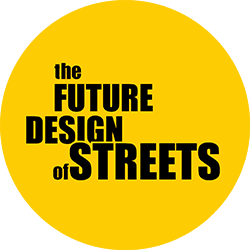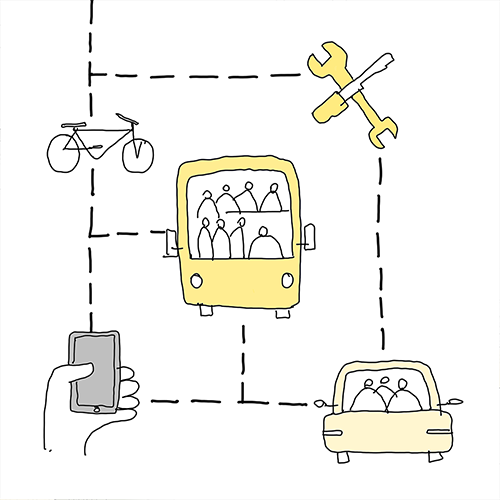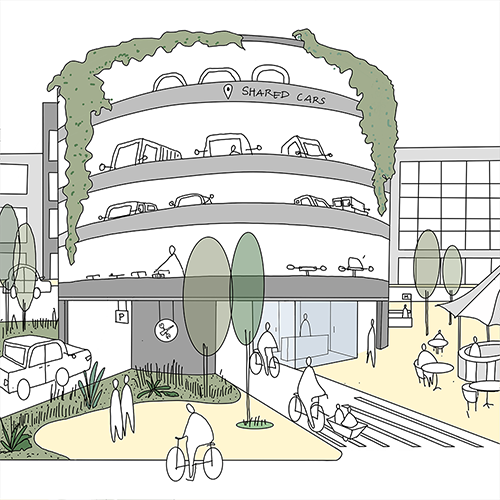MOBILITY & ACCESSIBILITY
Urban mobility is responsible for over 70% of CO2 emissions … changing, accelerating the shift to sustainable mobility is the key challenge of our decade, of our generation and of our streets.
David Vale
Rethinking the place of urban mobility in streets can be done in various manners. Two principles are important in this, namely: 1) thinking mobility as a complete system, including all aspects of transport modalities, infrastructure, and parking (including accessibility and interaction moments like local or regional mobility hubs); and, 2) changing the priority of mobility participants: first people that walk or cycle, then public transport, and at last motorised vehicles. This also means: reducing speed to 30 or 15 km/h on local streets and reducing the space dedicated to cars.
Street design should, in principle, always start with the space where people are.
Creating the right conditions for that should be a priority. After that, all other spaces can be designed and organised.
Basically, it is just a matter of starting from the sides of the streetscape and then working towards the centre. That is the opposite of what is currently seen in current practice, often resulting in very narrow pedestrian areas. How this is applied depends on which kind of street it is. For example, local residential streets without parking can have a square or park design layout, but avenues with a wide dimension can integrate main urban traffic flows with green and social spaces to stay.
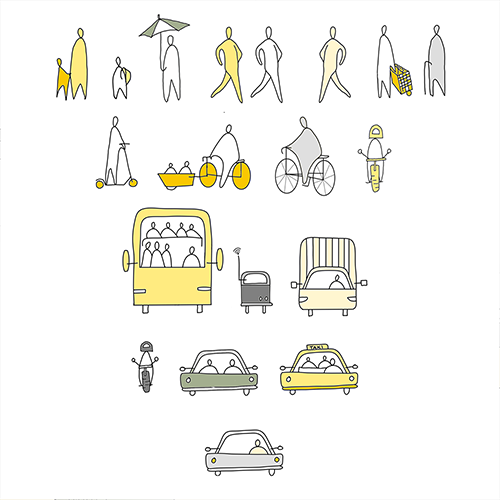
SHIFT PRIORITIES
In order to have social inclusive, sustainable urban ecology and good accessible streets, it is essential to rebalance the place and use of different mobility modes. Prioritising first pedestrians and cyclists, then public transport and loading goods, and at last individual motorised vehicles.
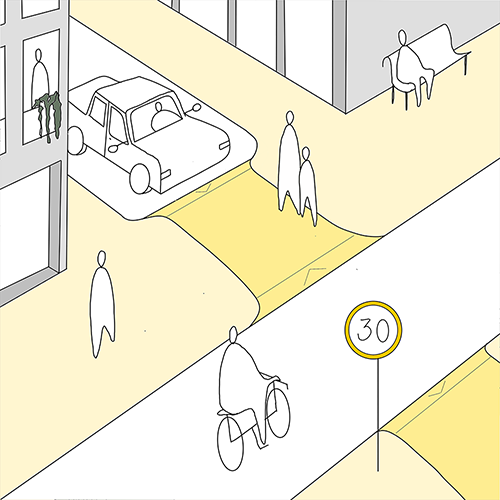
TRAFFIC CALMING
To increase the liveability in (local) streets, traffic safety, speed control and traffic calming are essential to create conditions so that the street space can be used in an autonomous manner by everybody, from 8 to 80 years old people. It is essential to start with designing the space for walking.
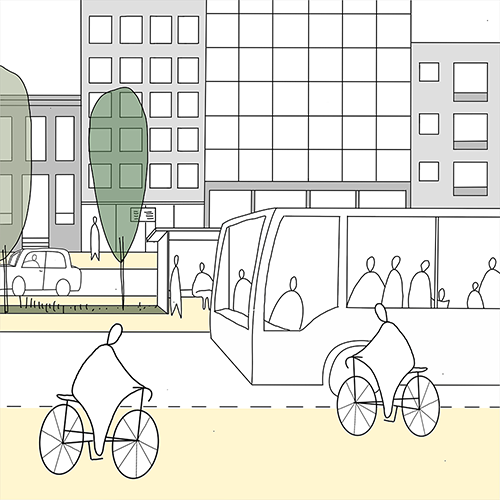
PUBLIC TRANSPORTATION
There are many forms of public transport. It is important to implement and integrate these systems into the street space as part of the public space. Adaptation for dedicated lanes or of frequency and speed, comfortable and safe waiting places, reliability, and punctuality are important factors for good public transport. New technology can also facilitate public transport/shared mobility modes.
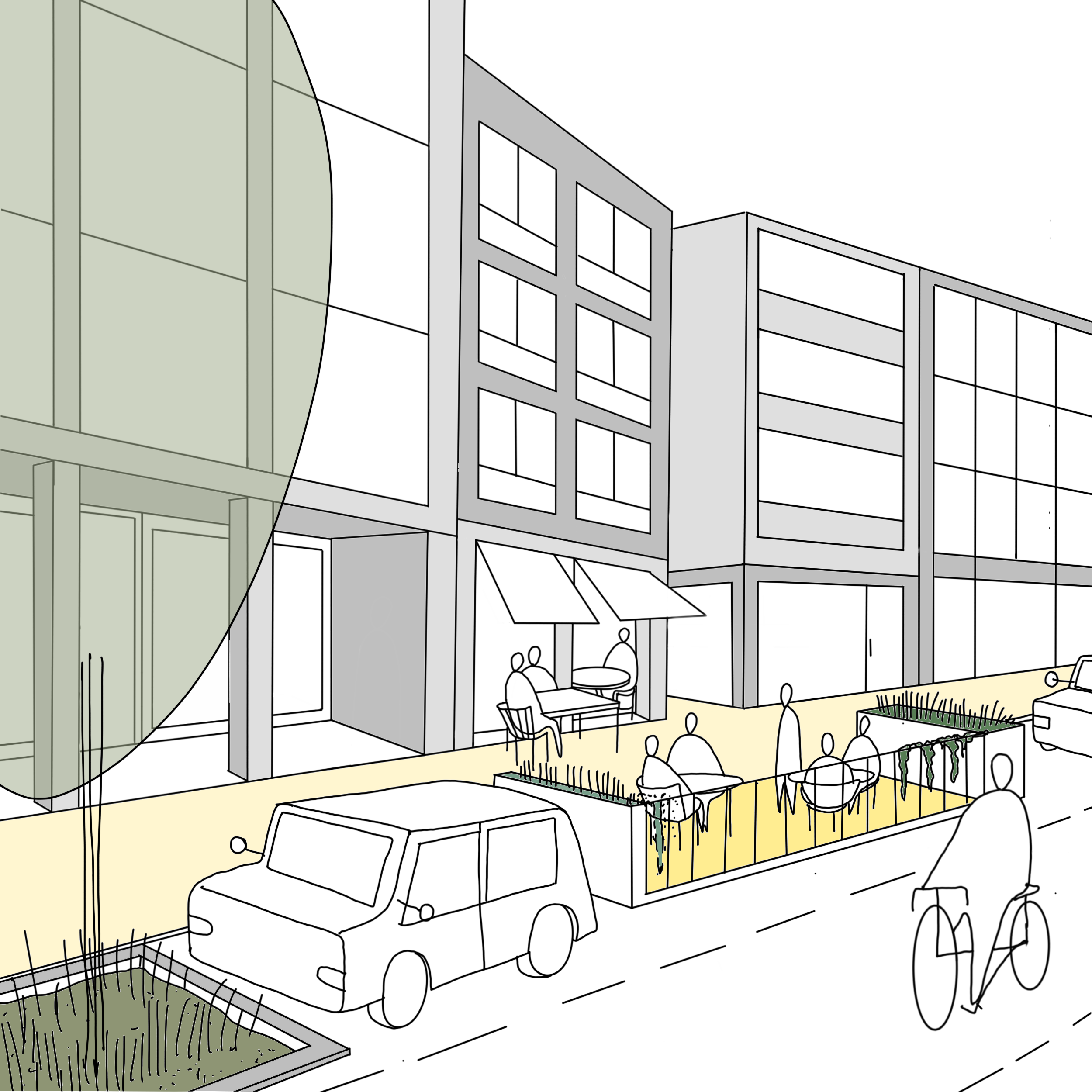
LESS STREET PARKING
Cars dominated often more than 75% of the available street space, including lanes for driving and parking. Reducing parking space creates a whole range of other possible uses and space for many activities. It is important to assure accessibility for all, for disabled persons and for delivering/ loading and unloading. Herein the curb, design and regaulations, plays an important role.
